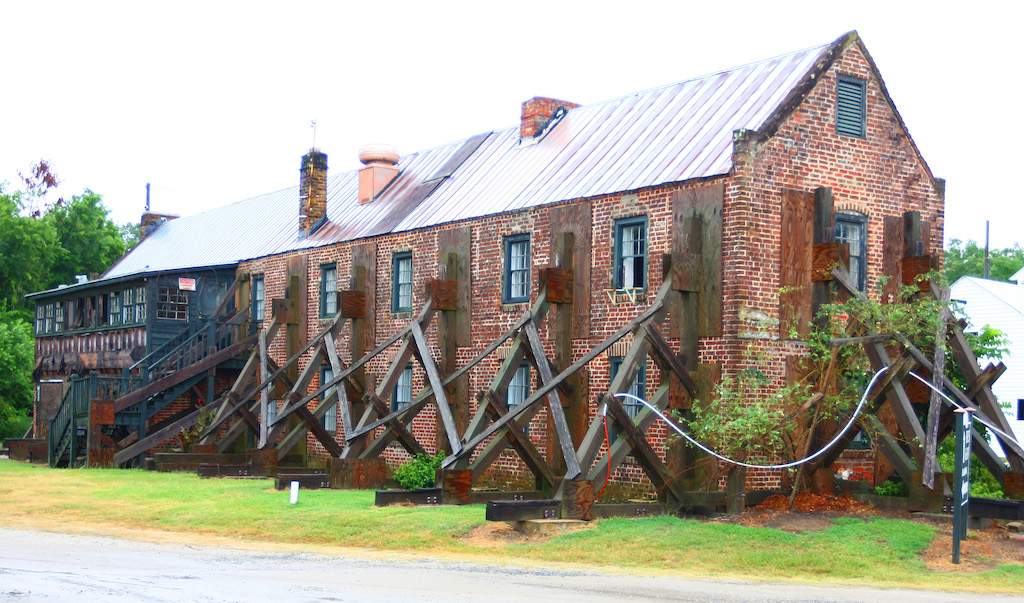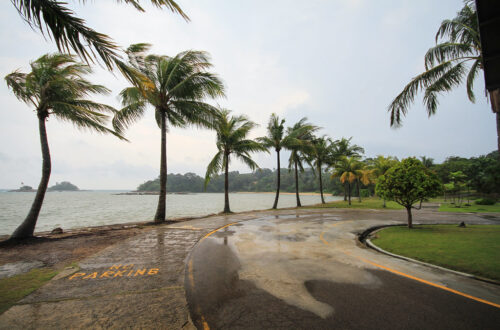
Top 9 Historic Plantations to Visit in Charleston SC
If this is not historic and beautiful, there is no place that better speaks to it than the plantations of Charleston, South Carolina. These stately homes offer insight into local history, from architectural splendor to dainty gardens and the complex history of the antebellum South. In Charleston, a history buff or a nature enthusiast will have a retreat in these great plantations. In the article, we are going to discuss the top 10 historical plantations that are worth visiting in Charleston, SC. Each of them has a story to tell.
Top 9 Historic Plantations to Visit in Charleston SC
1. Boone Hall Plantation
Overview and History
Boone Hall Plantation is one of America’s oldest working plantations, dating back to 1681. This lovely plantation has had an avenue of oaks for over three hundred years. It was originally founded by Major John Boone and has passed through many hands down the centuries, with each contributing to the plantation something that has survived to the present.
Key Features and Attractions
This provides visitors with the chance to explore a well-preserved Georgian-style mansion, original slave cabins, and stunning gardens. The plantation is also involved in hosting educational tours and reenactments to let visitors learn about the people who lived and worked here. One of the most iconic features is probably the Avenue of Oaks, a stunning entrance lined by tall oaks draped in Spanish moss. The plantation also offers various seasonal events including the popular Boone Hall Pumpkin Patch and Boone Hall Fright Nights.
Visitor Information and Tips
Boone Hall is open daily to the public for guided tours. Be sure to check with the plantation for special events scheduled throughout the day and any seasonal activities. There is also a farm market on the plantation where one can buy fresh produce and other local items. You will want to allow at least half a day to wander the grounds, and don’t forget a camera to take all the beautiful pictures.
2. Magnolia Plantation and Gardens
Historic Significance
The garden is the center of everything for Magnolia Plantation. This place opened up its gardens to visitors in 1870 and has grown into one of America’s oldest public gardens. The Drayton family has owned the plantation for over 300 years—generation after generation of intertwining their history with Charleston and the American South.
Highlights of the Gardens and House
The plantation’s gardens are another highlight, with blooms year-round. There are winding paths, picturesque bridges, and peaceful ponds in the romantic garden style. The house itself is a museum and resurrects for visitors the Drayton family and the historically important role they played in this region. On the inside, one can view several original furnishings, family heirlooms, and artifacts narrating the story of people on the plantation.
Tour Options and Information for Visitors
Options include garden tours, nature tram tours, and boat tours. On the nature tram tour, visitors will go through a variety of ecosystems such as forests, marshes, and wildlife habitats. The boat tour features a scenic cruise along the Ashley River, which allows views of the plantation from the water. This plantation is open year-round, while various garden blooms vary by season—check their bloom schedule when deciding when you would like to stop by.

3. Middleton Place
Historical Background
Middleton Place is known to be a National Historic Landmark and has the oldest landscaped gardens in America. The place was founded in the early 18th century, being the home of the amazing family of Middletons, with Arthur Middleton being one of the signatories of the Declaration of Independence.
Unique Features
Middleton Place includes 65 acres of well-manicured gardens, a House Museum, and a working stable yard. There is also an extensive collection of antiques and artifacts on the plantation. The gardens are articulated as in European style, with the terracing of the lawns and pools and reflecting pools of great beauty with sculpted hedges. A great deal of historic artifacts to be seen, for instance: presents the original furnishings, fine arts pieces, and documents associated with the Middleton family.
Visitor Information and Suggested Activities
Visitors can walk around the House Museum and see the various periods of colonial life interpreters represent in the rooms. They can walk around the garden and see the different colonial-era crafts alive in the stable yard. The stable yard houses demonstrations on weaving, pottery, blacksmithing, and other products of colonial times. Middleton Place also provides restaurants focusing on Lowcountry cuisine. The Middleton Place Restaurant includes in its menu farm-to-table dishes, inspired by traditional southern recipes using ingredients grown in the plantation.
4. Drayton Hall
Overview and Historical Context
Drayton Hall is an 18th-century plantation, an example of the best Georgian Palladian buildings in the United States. While almost every other plantation was restored with some touches of the modern age, this one continues to share its historical authenticity since it was preserved in its original form.
Architectural Significance and Preservation Efforts
Drayton Hall is a unique architectural site characterized by its architectural integrity and historical authenticity. Conservation at Drayton Hall centers on keeping the house as it was originally built and the surrounding landscape as it was historically. The large late Palladian mansion is considered one of the finest examples of Georgian-Palladian architecture in America. More importantly, both the exterior and interior of the house are well preserved.
What to See and Do
Also notable are the guided tours of the house, the African American cemetery, and educational programs that highlight the history and preservation of the estate. The African American cemetery is one of the oldest in the country and serves as a stark reminder of the slaves who called Drayton Hall home and place of work. The plantation also offers programs on hands-on work, ranging from archaeology and architecture to conservation.

5. McLeod Plantation Historic Site
Brief History and Significance
The McLeod Plantation opened in 1851, is a site that details the lives and experiences of its inhabitants, particularly the journey of enslaved Africans and their descendants. The plantation was sensitively preserved to reveal the stories of the McLeod family and the people enslaved to work on the land.
Key Attractions
There are the main house and the slave cabins, which are historic as well. Guided interpretative tours speak to the plantation’s history and the legacies of slavery. The main house is restored with authentic furnishings and artifacts from the period. Slave cabins, constructed in two rows along a beautiful oak avenue, are preserved for the portrayal of living conditions and the day-to-day lives of the slaves.
Visitor Information and Practical Tips
McLeod Plantation is open to the visiting public and can be accessed by guided tours. It’s an experience to fully immerse yourself in, so allow a few hours to fully be at the place. The plantation also provides special programs and events, including lectures, workshops, and historical reenactments. Put on your most comfortable shoes, as the place shall also be covered on foot.
6. Hampton Plantation State Historic Site
Historical Overview
Hampton Plantation is another of the rice plantations built in the 18th century, nestled amongst many others around the United States. The grounds have been turned into a state historic site and can let visitors catch a glimpse of the colonial and antebellum history of the Lowcountry. Several distinguished families, including the Horry and Rutledge families, have lived in it, and it has played a cornerstone role in the agricultural history of the region.
Tour Options and Visitor Highlights
The visitors get to visit the big-house plantation mansion, historic rice fields, and the ways of ancient fishery live oaks. This big-house plantation mansion represents a grand and elegant architecture and the period furnishings offer a glimpse into the lives of a rich class of owners of various plantations. The once meaningful rice fields now stand as a reminder of the ingenuity and labor of the many enslaved workers who toiled there. Also located at the site are several information exhibits regarding the history of the plantation and the people who lived there.
Visitor Information
Hampton Plantation is one of the state parks in South Carolina State Parks and can be toured on regular trips, including the mansion as well as the grounds. For lovers of history, this is a tranquil and informative reprieve. The plantation organizes special events along with historical reenactments, nature walks, and kid’s educational programs.

7. Charleston Tea Garden
Unique Status as a Tea Plantation
The uniqueness of Charleston Tea Garden is that it is not only seen by the visiting guests, but it serves as an impression of the tea-growing process. The garden is located on Wadmalaw Island, just a short drive from downtown Charleston, where the scenic beauty of the Lowcountry offers the perfect setting.
Tour Options and Highlights
Guests have the opportunity to take trolley tours across the tea fields, visit a tea factory, and take part in tastings of American Classic Tea. The garden also offers special events and festivals during the year, like their First Flush Festival, celebrating the first pluck of the season. The factory tour details a comprehensive view of how tea production follows from leaf harvesting to packaging of the final product.
Visitor Information
The Charleston Tea Garden is open every day of the week. Tours of the grounds are scheduled numerous times throughout the day. The whole environment feels exclusive and provides a sense of agricultural education while one enjoys the landscape of the Lowcountry. There is a gift shop on site that sells many teas and other items made from local ingredients.
8. Snee Farm
Historical Significance and Background
One of the mansions that had a key mention in the history books of the U.S. was Snee Farm, once home to Charles Pinckney, one of the signatories of the U.S. Constitution. Located in Mount Pleasant, the plantation was part of a large estate that had a very significant role in the agricultural economy of the region.
Key Attractions
The historic farmhouse, archaeological exhibits, and nature trails are all a part of this site. Educational interpretative programs convey the life and contributions that Pinckney made. The farmhouse has been restored to appear as it did during Pinckney’s life and is furnished with exhibits relating to his political career and personal life. There are interpretive signs along the nature trails featuring the history of the plantation and natural features in a very quiet setting.
Visitor Tips and Information
Snee Farm is managed by the National Park Service. It is operated as a walk-through tour site with interpretation. It is a treasure for families and history lovers. Regularly scheduled events on the site include historical demonstration days, lectures, and children’s activity days.
9. Poplar Grove Plantation
Brief History and Significance
Listed on the National Register of Historic Places and maintained on 110 acres near Ravenel, just a few miles from Charleston, Poplar Grove Plantation is an intriguing preservation of the history of agriculture and culture of the larger region. Growing under the Lowcountry’s natural beauty and cultural history, it is an 18th-century property.
Key Features and Attractions
Facilities here included the main house, outbuildings, and attractive grounds. The property interprets history and significance through programs and special events. The main house offers the architecture of the building and furnishings of the period of the prosperous plantation owners and how the planters’ lives were conducted. Included in the outbuildings: Barn, Blacksmith shop, and Smokehouse Exhaustive
Visitor information:
Events, with seasonal activities and tours, are open to the public. It is a wondrous place to enjoy a relaxing respite and a return to the past. The plantation also offers many recreational activities, from horseback riding to kayaking and hiking, which makes it a perfect destination for outdoor enthusiasts.
Conclusion
Charleston’s plantations are more than simply beautiful estates; they are living testaments to this region’s complex and rich history. Each community offers its own unique, personal experience from the grandeur of Boone Hall to the educational evolution of McLeod Plantation. Whether it’s the vibrant gardens, the historic homes, or the stories of the people who lived and worked these lands, visits to the plantations in and around Charleston provide deeper insight into the past and great appreciation for being in the Lowcountry. So grab your bags and head back in time as you explore the ten best historic plantations in Charleston, SC. Each is guaranteed to leave you with an experience filled with the history and beauty of a touch of Southern charm.






